Matador Network's Blog, page 790
September 4, 2020
Mexican resorts 20-year giveaway

The 2020 travel scene has been a bit strange, but some Mexican resorts are trying to make up for it with a very generous giveaway. Hotel operators along Mexico’s Caribbean coast are partnering to give away an all-inclusive vacation for two every year for the next 20 years. The two winners will be able to enjoy four- or five-star hotels in popular destinations like Cancun, Cozumel, and Isla Mujeres for a five-night stay that renews each year.
You can enter the contest via Instagram or TikTok. Just upload a photo or video inspired by the Mexican Caribbean with the @Come2MexicanCaribbean tag and the #Come2MexicanCaribbean hashtag. The contest organizers will choose the posts with the most likes, comments, and shares as the winners, so make sure you get your friends to engage with your post. Entries close on November 9, and the winners will be announced on November 27.
Mexico, one of the most popular tourist destinations in North America, has suffered immense economic repercussions from the COVID-19 pandemic. On Friday regulations in Quintana Roo began allowing tourism businesses, hotels, and beaches to start operating at 60 percent capacity, though tourists have been slow to return to the area. The goal of the contest is to spark renewed interest in Mexican tourism and get travelers excited about a getaway on Mexico’s Caribbean coast. 
More like thisSolo TravelI moved to Mexico for a better life during COVID-19. It’s the best decision I’ve made.
The post Mexican resorts are giving away a free vacation every year for the next 20 years appeared first on Matador Network.

Chicago seeking outdoor dining ideas

As winter approaches, restaurants have to get innovative to continue their outdoor offerings without guests freezing their butts off. To crowdsource new ideas, the city of Chicago is giving $5,000 to residents who come up with ways to make outdoor dining possible during the cold season. The city is famous for its cold weather, with temperatures averaging 17 degrees in January.
Chicago mayor Lori Lightfoot announced the Winter Dining Challenge on Twitter, saying, “We’re asking Chicagoans to share their ideas for innovative winter outdoor dining solutions that adhere to COVID-19 protocols so we can support our favorite local restaurants while keeping Chicagoans healthy.”
Chicago winters have a reputation. We're asking Chicagoans to share their ideas for innovative winter outdoor dining solutions that adhere to COVID-19 protocols so we can support our favorite local restaurants while keeping Chicagoans healthy. https://t.co/9F1h4kfHmC
— Mayor Lori Lightfoot (@chicagosmayor) August 25, 2020
The $5,000 prize will be awarded to three Chicago residents who submit ideas that adhere to the city’s COVID-19 guidelines and include a prototype and feasibility research. There are three categories for submissions — Outdoor Ideas (“on patios, on sidewalks, in parking lots, or other spaces”), Indoor-Adjacent Ideas (solutions implemented “immediately adjacent to indoor spaces”), and Cultural Change (“Solutions are designed to influence a cultural shift in the City of Chicago that makes outdoor dining more appealing in the colder months.”)
According to the official contest website, “Takeout and delivery will remain options, but they often do not provide sufficient revenue to keep these places in business. As such, designing ways to attract customers to go out to their neighborhood restaurants and stay on-site for their meals is the priority in this design challenge.”
Already over 360 ideas have been submitted, including igloos, greenhouses, yurts, and labyrinths. The deadline is 11:30 PM on September 7, and ideas can be submitted online. 
More like thisRestaurants + Bars9 best bars for a late-night drink in Chicago
The post Chicago is offering $5,000 for innovative ways to dine outside this winter appeared first on Matador Network.

Brazilian islands reopening plan

Like many other destinations around the world, these Brazilian islands are eager to open to tourists. However, they’re taking a slightly different approach than other tourist hotspots. Rather than requiring a negative COVID-test, the archipelago of Fernando de Noronha is only allowing tourists who have already had COVID-19 and recovered.
The island off the northeastern coast of Brazil is famous for its marine life, beaches, and mountains along the coast. It has only 3,100 permanent residents, and the government is doing its best to keep those residents safe while also salvaging tourism.
André Longo, the health secretary of the state of Pernambuco, said in a statement, “There hasn’t been community transmission on the island for a long time. We have to keep it that way. Obviously, this step is going to be done with an eye on safety and reactivating economic activity on the archipelago.”
To prove that they’ve recovered from COVID-19, travelers must submit the results of one of two tests — a positive RT-PCR test performed more than 20 days prior to arrival, or a positive serological test that shows the presence of antibodies, taken within 72 hours of departure.
Regarding COVID-19 immunity, the CDC is still being very cautious, warning the population that “We do not know yet if people who recover from COVID-19 can get infected again. Scientists are working to understand this.”
The new policy took effect on September 1. 
More like thisSurfingThe beaches of Cabo Frio, Brazil, are as epic as the surfing
The post This Brazilian archipelago is only opening to tourists who have had COVID-19 appeared first on Matador Network.

Native Hawaiian culture
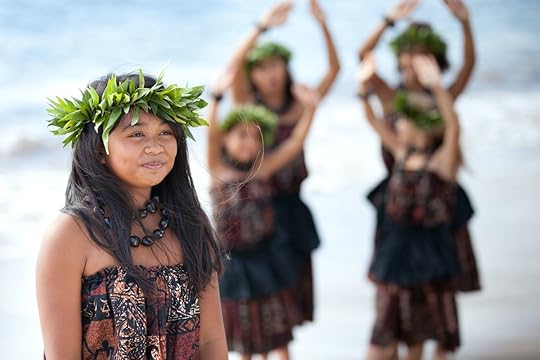
“Our history didn’t start with Captain Cook and the missionaries,” says Kainoa Daines, Director of Culture and Product Development at the Hawai‘i Visitors & Convention Bureau. “Our history goes back thousands of years.”
Polynesians, who started sailing long distances as far back as three thousand years ago, have been populating the islands of the Pacific since that time. They may have arrived in Hawaii as early as the year 400.
Davies wants visitors to have a better understanding of the land of his Hawaiian ancestors. In fact, the Hawai‘i Visitors Bureau had never had a position focused on culture before, and he essentially wrote his own job description for it.
“We didn’t have a chance to tell our story, and only now are we telling our story,” says Daines. “A lot of it was done by outsiders. They were telling the rest of the world, without talking to us, this is how we interpret Hawaii. And we, in the last 10 to 15 years, have been reclaiming that image of who we are.”
The good news, says Daines, is that travelers want to know Hawai’i more deeply, and many are ready to take the time and effort to do so. Today’s new generation of travelers is “more educated and more interested in culture and history,” says Daines. “They’re wanting to know more about the place, and they want to also travel where they can give back.”
For those wanting to better understand the culture of Native Hawaiians and how to give back, we’ve got a few suggestions:
1. Read
Before you go, familiarize yourself on the basics of Hawaii’s fascinating history, even if it’s just a well-researched article you can find on the internet. If you are up for a book, get a copy of Hawaii Queen by Hawaii’s Queen, written by Queen Liliuokalani, Hawaii’s last reigning queen. It’s a book that Daines used to give all visiting travel agents and tour operators a copy of back when he was Director of Sales at the Oahu Visitors Bureau.
“[Queen Liliuokalani] lived through the monarchy, she lived through the overthrow, and so from a historical place it doesn’t get any more accurate than her experience of Hawaii from the 1830s to the early 1900s,” says Daines.
As Daines explains, because Hawaii is now a US state — something it has only been since 1959 — most American students only learn about it in that context. “Pearl Harbor and pineapples are usually what’s covered in America history class. And so it’s very eye-opening for our travel agents … They’re just like, I had no idea that Hawaii was that involved in global politics, in a sense, back in the 1800s. We had a seat at the table with other heads of Europe and America and Asia.”
It’s important to understand that Hawaii had a thriving culture of its own before Europeans arrived and gradually started stripping Native Hawaiians of their power and land. In 1893, a group of European-American settlers, with help from US Marines, overthrew Queen Liliuokalani, and in 1889 the US annexed Hawaii. A century later, in 1993, President Bill Clinton acknowledged the injustice of that coup against Hawaii’s monarchy and issued a formal apology.
2. Time your visit

Photo: G Ward Fahey/Shutterstock
Time your visit to occur during one of Hawaii’s many festivals, particularly ones centered on its Native culture. Daines, who reviews grants for the Hawaii Tourist Authority (HTA), says the HTA has begun dedicating more resources towards preserving Hawaiian culture — irrespective of the tourist element.
“The Hawaiian Tourism Authority gives out several million dollars a year to several festivals and events across the state that promote and celebrate the Hawaiian culture,” said Daines. “We promote the heck out of these festivals for this reason. These festivals are really how you truly connect with the people.”
One such festival is the King Kamehameha Celebration, which occurs on June 11 in Oahu every year and honors the monarch who united the Hawaiian islands. Daines has been the chair of that event for nearly 13 years.
Another festival to consider is the May Day festival, which is also known locally as the Lei Day Festival and takes place on May 1 all over Hawaii. Each island has its own lei that represents what’s unique about that island. You can see people making leis and learn more about floral strands’ cultural significance. “Lei culture really personifies the spirit of aloha and the giving nature of this place,” says Daines.
The list of events on each island is endless — from full-on festivals to weekly events inspired by Hawaiian culture. Check out the list of festivals and events here, and then make your travel plans.
Explore

Photo: Iolani Palace/Facebook
“There’s more to Hawaii than sun, sand, and surf,” says Daines. The islands are full of sites and offerings that will allow you a better look at its Native culture. If you’re on Oahu, visit the Iolani Palace, the only royal palace on US soil. Go to the Bishop Museum, the best look at Hawaiian culture and history in one place.
You’ll find ancient sites all over the islands — from fishponds to petroglyphs. You’ll also find more intact structures like the ruins of King Kamehameha’s summer place on Oahu and those of the Mookini Heiau temple on the Big Island, near the birthplace of King Kamehameha. Located on the Big Island’s northern tip, across the channel from Maui, it’s an ethereal, windswept spot and an interesting place to contemplate Hawaii’s complex history.
You’ll also find museums on other islands like Maui. While Daines acknowledges that not everyone is attracted to museums, he says many of them often have an active component — bringing in specialists who “do language, music, art, weaponry, dance” and so on — giving you an opportunity to better explore the culture.
Tourist luaus are not a genuine Native Hawaiian experience, feels Daines. He says they are fine to attend and adds, “We all work at them. A lot of Native Hawaiians work at these places, and there’s ‘Hawaiian food’ on the menu, and there’s dance and entertainment.” But Daines feels they are not “authentic,” acknowledging that even the word authentic is so often overused.
Learn

Photo: Punchalit Chotiksatian/Shutterstock
Rather than attend tourist luaus, take a class — such as those offered at museums and cultural centers where you can get an up-close look at Hawaiian traditions. In such a setting, you can ask the practitioners about their expertise and make a deeper connection with them. Whether during Lei Day or at one of the islands’ botanical gardens, you may be able to find a lei-making class. Likewise, you’ll find classes on playing the ukulele, and even hula dance classes.
If you’re staying at a hotel, ask for assistance in finding a class. Daines says hotels are becoming increasingly aware of travelers’ interest in local culture and are offering more off-site opportunities for their guests. You could even go a step further and practice a little Hawaiian. In 2018, the language-learning app Duolingo added Navajo and Hawaiian to its options.
Support
When in Hawaii, make an effort to support Native Hawaiian businesses. One favorite of mine in Kauai is the Kalalea Juice Hale, off the highway on the way to Hanalei. It’s in Anahola, a part of the island reserved for residents of Native Hawaiian descent. On Oahu’s North Shore, the Haleiwa Store Lots are all locally owned and emphasize products made in Hawaii, Oahu, and, even more specifically, on the North Shore. While they aren’t necessarily Native Hawaiian per se, it’s a good first step.
Daines says the Visitors Bureau doesn’t yet have a list of locally owned stores and businesses, but whichever island you’re on, be sure to ask around. When you come home with a Hawaiian shirt, it would be nice if it were actually made there.
Be sustainable

Photo: MNStudio/Shutterstock
A major principle of Hawaiian culture is aloha aina, or love for the land. The idea is that “the land is our ‘mother’ or Mother Earth,” says Daines. “You take care of the Earth, she takes care of you, and that should be a global perspective on the planet that only has so many resources that we live on.”
To understand Native Hawaiian culture, comprehending that commitment to the land is key. Daines says there are opportunities to volunteer at taro patches, pulling weeds, pounding the taro, and having a lunch of poi. A component of this is learning about taro’s cultural, spiritual, mythical significance to the Hawaiian people.
Daines says while there aren’t yet enough of these opportunities for interested travelers, he’s seeing ever more of them. If you do some research, you may even be able to join locals and volunteer at a on a taro farm. Either way, treating the islands with reverence and being a mindful traveler isn’t just the right thing to do. It’s in keeping with the spirit of the island’s first residents.
Have an open mind

Photo: Pavlina Trauskeova/Shutterstock
When you come to Hawaii, arrive with an open mind and an open heart. That is the first step to understanding the local culture, as it’s a central tenet of it. In other words, come with “aloha” in mind. While the word translates to “hello, goodbye, and I love,” it is much more than that.
“That’s the translation literally, but aloha is a feeling, an emotion, it’s a way of life,” Daines says. “It’s generosity without expecting anything in return.” In fact, Daines goes onto explain that the other word many travelers learn, “mahalo” means much more than just thanks.
Hawaiian has no word for you’re welcome since the gesture of giving is expected. “Mahalo is thank you, but also respect, like I respect what you just did for me — so thank you and respect wrapped up in one word,” says Daines. “And it was meant to be reciprocal, just like the word aloha is reciprocal, when I share my aloha with you and you’re genuinely kind and generous with somebody.”
Five years ago on the island of Kauai, I spent a week surfing with Native Hawaiians, who invited me and my surf mates into their homes. The warmth I learned from them stayed with me for weeks and has filled my heart again on my many return trips to Hawaii. I sensed it again in speaking with Daines.
Aloha is so important to Hawaiian culture that Daines usually spends a half-hour explaining the concept in the cultural training that he offers not just to travel executives but to frontline workers as well — and even 30 minutes, he says, feels insufficient to convey the word’s spiritual layers as well. Aloha is so central to Hawaii that is enshrined in the state’s constitution.
While Daines says no one is actually going to get arrested for not practicing aloha in the state, they should make every effort to do so. When your feeling of aloha is “genuine,” he says, “It’s hard not to be nice to someone who’s being nice to you. That’s who we are.”
And when you truly practice aloha, you can get to know locals who can point you to markets, classes, and events where you can get a closer local at Native Hawaiian culture. You are sure not only to understand that Hawaiian “culture is still alive and thriving,” in Daines words, but you’ll be enriched by the spirit of aloha. 
More like thisBeaches + IslandsWhy Kauai is the most underrated island in Hawaii
The post Experience Hawaii’s thriving Indigenous culture beyond sun, sand, and surf appeared first on Matador Network.

Haunted houses to rent on Airbnb

September is the unofficial start of the fall season. And besides the fact that leaves are starting to change colors, and that pumpkin spice is making its way back onto the beverage scene, this is the time of year when everyone gathers up their courage and visits locations that are infamous for horror- and haunted-related associations. If you’re willing to take things one step further and truly test the limits of your bravery, staying in a haunted Airbnb is a surefire way to have a spooky experience. From a Victorian home in Canada to a manor in Germany, here are eight haunted Airbnbs you can rent this fall.
1. The Haunted House — Penetanguishene, Ontario

Photo: Airbnb
This impressive Victorian home was once the home of Canadian lumber magnate Charles Beck, who in addition to effectively creating the town of Penetanguishene, also opened the first box factory in Toronto. Beck’s wife died leaving him with nine children, the oldest of whom, Mary, did most of the child-rearing. When Beck died, he only left poor Mary a dollar, and guests and residents of these apartments have reported seeing a tall man in a suit and an angry woman in a blouse standing in the hallways. Perhaps they will join you for the weekend when you rent Brenda’s meticulously furnished two-bedroom apartment, complete with period pieces, ornate rugs, and a warning about wandering spirits.
2. Inspiration House — Oberlin, Ohio

Photo: Airbnb
The Inspiration House has an almost-tangible sense of the paranormal, with an entire display room on the first floor devoted to ghosts and the afterlife. You are welcome to tour it by request, though it’s usually closed because many guests found it “creepy.” Equally creepy are the heavy boots and floor scratching people have reported hearing upstairs, as well as the musical instruments in the living room that often decide to play themselves. Typically, this three-bedroom house near the center of Oberlin is used for meditation and spiritual retreats. But here, they mean your retreat might also involve actual spirits.
3. Gettysburg Historic Lookout House — Aspers, Pennsylvania
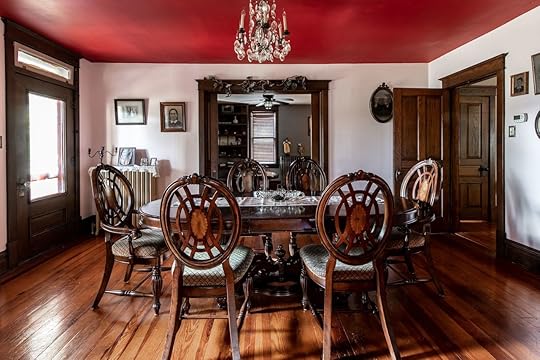
Photo: Airbnb
When you’re this close to one of the deadliest battle sites in American history, having a few ghosts around shouldn’t be much of a surprise. Such is the case in this Victorian home about 10 miles from Gettysburg. The room you’re renting is beautifully decorated with hand-painted floors, an antique dresser, and a queen bed with a memory foam mattress. Hopefully that memory foam helps you sleep through the footsteps coming down from the unoccupied attic, and will help you conk back out after the ladies giggling down the hall wake you up in the middle of the night. The house dates back to 1838, and the attic was host to soldiers on the way to the battle of Gettysburg, which may explain why some guests have reported seeing a uniformed man lurking in the home’s dark corners.
4. Manor Retreat — Rensow, Germany

Photo: Airbnb
If you’re staying in a remote castle somewhere in northern Germany, owned by a Danish Countess and lit mostly by candlelight, you’d be pretty disappointed if the place wasn’t haunted. The foundations of this manor date back nearly 1,200 years, and you’ll be staying in a niche apartment within the manor’s walls. Christina — your host — lives in the manor as well, and will gleefully explain how the house is believed to be haunted by the Slavic gods that the people of the area used to worship. The common areas also include vast libraries filled with centuries-old books and large green lawns filled with sheep.
5. The Enslin Mansion — Troy, New York

Photo: Airbnb
This home a few minutes outside Troy has such a distinct look it’s been used as a filming location for movies and TV shows, most recently for the feature film Fado. The interior is artful and eccentric, with hardwood floors, restored antique wallpapers, and conversation-provoking art on the common area walls. It’s also allegedly haunted, so much so that one of the individually rentable rooms is called the “Haunted Bedroom,” presumably so you can’t ask for your money back if you end up sharing the place with an uninvited apparition. If a ghost does show, there’s an easy escape as the Haunted Bedroom offers access to the third-floor attic. Though no guarantees there either.
6. Manor Master Chamber — St. Paul, Minnesota

Photo: Airbnb
Photographed from the right angle, this 1883 stone home looks like it could be a poster for a haunted house anywhere. So it reasons the ghost of Rosalia Finh, who died here as a child of typhoid fever, would be hanging around the hallways over a century after she passed away. Sean, who runs the place, claims to have found an old hair beret on the ground when he first moved in, and got an intense vision of a young girl in a white dress when he picked it up. Other guests have reported feeling a strange energy when standing outside the closet in Rosalia’s bedroom. Perhaps the best authority on the home’s spirits, however, is Scorch, Sean’s 9-year-old Doberman and head of security who may seem to be barking at nothing, but may just see a vision that you don’t.
7. The Stroud House — Wake Forest, North Carolina

Photo: Airbnb
The whited-out guest suite in this 1940s home has its own separate entrance, which may be why despite reports of glowing orbs, a self-playing music box, and lights that turn themselves on and off, none of it has ever happened in the guest areas. Ghosts, apparently, aren’t so good with code locks. Host David, however, will give you a ghost tour of the house if you’d like, since the spirits don’t bother the short-term guests. The house was originally built by David’s great-grandfather and he is the fourth generation to live in it. His listing offers no theory on who the ghosts might be or why they’ve moved in, but a few nights here might give you some ideas.
8. The Haunted Bedroom — Talliston, England

Photo: Airbnb
At this Airbnb in Talliston, you’ll have a private room in a house that just radiates ominous vibes. The home itself was featured on the documentary Britain’s Most Extraordinary Homes and we can see why. The master bedroom you’ll be staying in recreates that of an Edwardian child, with children’s toys and books lying around, and it’s the stuff of nightmares. Dark, imposing, and close quarters, staying here will require nerves of steel. And that’s not to mention the unexplained smells and sounds coming from the walls, as well as the ocean sounds coming from just outside the bedroom window. 
A version of this article was previously published on October 7, 2019, and was updated on September 4, 2020, with more information.
More like thisEntertainment8 serial killer tours for the true-crime obsessed
The post Stay at these 8 haunted Airbnbs for a truly terrifying Halloween night appeared first on Matador Network.

TSA self-service checkpoints

The effort to reduce touchpoints in the airport isn’t just a temporary measure for the COVID-19 era, it’s introducing new technologies that will likely stick around long after.
The Transportation Security Administration (TSA) has just started testing a new self-service facial recognition system, which would replace the requirement to hand your ID to TSA officers. With the new technology, currently being trialed at Reagan National Airport in Washington, DC, volunteer passengers simply insert their ID into scanners, which then verifies their flight information and their identities by comparing the ID’s photograph to their live photo.

Photo: Transportation Security Administration
In a statement, TSA Administrator David Pekoske said, “We are exploring rapid testing and deployment of this touchless, self-service technology. At the conclusion of the pilot, we expect to be able to determine how positioning the new technology will allow passengers to use it themselves thereby providing a safer checkpoint experience, while adding significant security benefits.”
TSA agents will still be on hand to examine the facial recognition results and flight information, and to ensure passengers use the device properly. If the trial goes well, TSA plans to deploy the new technology at airports across the United States.
And if you’re concerned the agency will store your photo for government use, don’t be. The TSA is assuring passengers that photographs are not saved, nor do the machines have the ability to do so. 
More like thisTechnology + GearWhen Global Entry and TSA PreCheck are worth it, and which to choose
The post TSA is testing self-service facial-recognition devices at security checkpoints appeared first on Matador Network.

Chronic illness travel tips

“Why are you even traveling if you’re this sick?” the TSA border guard demanded with a look of disgust, as he quickly rifled through my backpack bulging with medications and mobility aids.
My smile faded, as I once again faced the full reality of my situation. Until this point, I had been having a relatively pain-free day — a rare occurrence — despite the excruciatingly long flight from Panama City to San Francisco.
This sort of interaction is sadly a common happening when I am on the road. Since the onset of my rare and not-yet fully understood chronic illness in 2017, I have existed in a constant state of hyper-awareness — of my body and my surroundings — a feeling that is hugely heightened during travel. And regardless of the progress in legislation, discrimination, inequitable treatment, and accessibility issues remain, including within the travel industry. Despite this, and often against my better judgment, I continue to travel, determined to live a life that brings me joy.
We travel but are often left out of the narrative
People who have a chronic illness and/or disability do travel. We just do so in a modified fashion and are often left out of the common travel narrative. Yet as many varieties of chronic illness and disabilities transcend race, gender, age, and class lines — we are the world’s fastest-growing minority.
In recent years, various bloggers and social media platforms have brought increased visibility and representation to those who opt to travel or work in the industry, but there remains a sense of exclusion. Although we know all bodies are worthy of being treated with dignity and respect, we are bypassed by mainstream media for a Western standard of beauty and an “ideal” body type.
The future of travel amid increasing health problems worldwide
Amid the COVID-19 pandemic, I have heard parallels of my story, of numerous individuals remaining ill long after prescribed timelines, existing in an uncertain liminal state, abandoned by the very medical system tasked to relieve their pain.
Here in Canada, like much of the world, the healthcare system has long been overwhelmed and underfunded, and in many ways, relies on outdated and flawed testing for many chronic illnesses. And it comes as no surprise that those most affected include the often overlapping BIPOC, queer, and disabled communities.
My journey to diagnosis is not unique; years of disbelief by the medical establishment, while progressively deteriorating, followed by lingering illness despite guidelines that stated I should be stabilizing. I know too well the frustrating road that awaits those who remain ill after surviving COVID-19.
While this increasing number of chronically ill individuals will change the future trajectory of the travel industry, chronic illness and disability do not mean the end of travel. With minor modifications and accessibility tips, it is possible to safely continue living one’s dream. Today, my body, although altered, is capable of many things, and travel remains one of them.
Tips to make travel safer
Although accessibility standards differ by country, and the variety of chronic illnesses and disabilities makes a comprehensive list of tips for travel difficult, hopefully the following guide can make travel a bit smoother.
Expect higher costs for medical care with limited travel insurance
The reality of travel with any sort of health issue, particularly immunocompromised status, often means additional costs not incurred by many other travelers.
For example, a huge amount of travel insurance plans do not cover pre-existing conditions, and these conditions, as well as recent hospitalizations and specialists’ appointments, must be disclosed, resulting in expensive and limited coverage. Hospitalizations may also have to be paid for out of pocket. I have experienced the medical system throughout the world, and have found wonderful levels of care from places such as El Salvador and Ukraine — but keep in mind costs will vary according to geographical area. If you need to stick to a budget, it is highly advisable to start here and plan your trip around this factor alone.
Plan ahead for accessibility
The days of spontaneous last-minute trips are, unfortunately, often no longer feasible for someone like me. However — even with the threat of COVID-19 — this does not mean that travel is not possible.
I have sailed from Panama to Colombia, and I have trekked in the jungles of Petén, Guatemala, in a back brace. I simply break my journeys up into manageable three-hour chunks — my time limit before my spine seizes up. It often takes me longer to reach my destination, but I greatly appreciate the unexpected places that I have experienced along the road.
For example, one year I was physically unable to handle a long bus journey to Tikal in Guatemala. Instead, I stayed behind to explore lesser-known archaeological sites, such as Zaculeu and Tak’alik Ab’aj in the Western Highlands, that I would have never experienced had I been capable of following the traditional backpacking route.
What has helped me is thoroughly researching countries beforehand, as well as visiting disability-related websites and social media groups for tips and information. Some great resources include But You Don’t Look Sick?, which features articles and tips on travel with chronic illness or invisible disability and Disabled World Travel, which has a variety of guides on accessible tourism. On social media, many voices can be found simply by searching under the hashtag #disabledtravel.
I would also suggest contacting airlines about mobility aids, as well as the option of pre-boarding. I require wheelchair assistance at the airport but can walk short distances. Many airports have required me to walk from point-to-point for pickup, which may be a problem for certain travelers. I also use a cane and storing it safely near me is quite difficult. I often book seats near the back of the plane, allowing me to store my cane behind my seat, instead of risking breakage in the overhead bins. Travel with other types of mobility aids can be difficult as well, with frequent reports of damage, so it is best to have a plan in case of emergency. It is also wise to research your rights beforehand on the Department of Transportation’s website.
Plan ahead for other types of accessibility, such as medication
However, it is not just accessibility in physical spaces that must be considered. It may also be difficult to access required medications while abroad, while travel with a large supply of long-term medication or syringes can be a problem as well.
My carry-on is regularly flagged, as border guards scrutinize my three-month supply of medication in bewilderment. In addition, certain types of medications require a medical practitioner’s note, some cannot be carried in large quantities, and others are simply banned in various countries. On a recent trip to Georgia and Turkey, I was forced to leave behind medication or risk legal trouble. Researching country laws before booking a trip, especially if these medications are crucial, is a great way to start. I would suggest browsing through a general list of commonly banned medications and checking with your destination country’s foreign embassy, as well as the International Narcotics Control Board.
Plan for the worst-case scenario
Despite my optimism, I always prepare for the worst. Keep all important documents handy in case of emergency, including lists of medications, conditions, and addresses in the country’s language. Learning parts of the body and basic medical terms is also recommended.
During my many hospitalizations, some of which were in Latin America, I have been grateful that I speak fairly fluent Spanish. However, I had to do work to get my medical language skills honed and I can now confidently describe my condition in four different languages. If languages are not your thing, apps like Google Translate, with the option of playing translation aloud, can be an absolute lifeline — just make sure you get a local SIM that gives you internet access and an extra level of security.
Pack only essentials
Although this is not always practical, try to pack only essentials, and only what you can manage on your own. Although many individuals have helped me along my journey throughout my travels, oftentimes, I have had to handle my luggage on my own.
I cannot lift more than five pounds but have become such an expert packer that I can easily travel for two months with a back roller, back brace, heating pad, medications, and clothing in a small backpack.
Organize accommodation in advance
Accommodation accessibility is not often as described on websites, so it is best to double-check and book ahead.
I always book the bottom bunk in dorms if possible and look for a place with elevator access or minimal flights of stairs. I also ask that my rooms are not cleaned with harsh chemicals, and many oblige by using vinegar and water instead. With that being said, I normally do a quick clean of the room myself. Stronger products may be required during the pandemic, of course, so pack a good supply of disinfectant wipes.
Be flexible and accept that plans may change to avoid disappointment
Finally, my most important piece of advice while traveling is to allow for flexibility. If your body is telling you no, know your limits, prioritize, and rest.
I was admitted to the hospital three days into my most recent trip to El Salvador, which forced me to cancel my entire itinerary along the Ruta de las Flores into the northern Morazán Department. Instead, I headed to the beach, slowly recovering in laid-back Quintana Roo, Mexico. This allowed me to continue my trip in a beautiful destination at a time when attempting mountainous curving roads would have been impossible. 
More like thisSolo TravelI moved to Mexico for a better life during COVID-19. It’s the best decision I’ve made.
The post Travel post-COVID-19 tips: a chronic illness and disability perspective appeared first on Matador Network.

Woman opens plane's emergency exit

Unlike most exit doors, airplane exits are not to be opened by passengers under any circumstances. Certainly not because you feel like momentarily escaping the stuffiness of the plane and getting some fresh air.
On August 31, one air traveler flouted the rules, deciding to open the emergency exit herself and take a leisurely stroll on the airplane’s wing.
Voir cette publication sur InstagramUne publication partagée par ПРО БОРИСПІЛЬ • НОВИНИ • ПОДІЇ (@boryspilchany) le 31 Août 2020 à 11 :23 PDT
The incident, which was captured on video, shows an unidentified person dressed in a white top and light pink pants standing on the wing at Boryspil International Airport in Kiev. Airport crews looked on in astonishment while recording the strange spectacle. After a few minutes, the airplane’s crew brought the passenger inside.
The passenger had been traveling on a Ukraine International Airlines flight from Antalya, Turkey, to Kiev with her husband and children, and allegedly claimed she was “too hot” before opening the exit door for some fresh air. Due to the incident, she is now banned from all UIA flights. 
More like thisTravel7 rights all air passengers have and should know about
The post Video shows a plane passenger opening the exit door to take a stroll on the wing appeared first on Matador Network.

Longest glass-bottomed bridge

A new record has just been set in the world of bridges. A 1,726-foot-long bridge was completed by the Architectural Design & Research Institute of Zhejiang University in the Huangchuan Three Gorges Scenic Area of southern China. The bridge, which spans the Lianjiang River, has officially been recognized by Guinness World Records as the longest glass-bottomed bridge in the world.

Photo: Lianzhou Qingtian Tourism Development Co., Ltd.
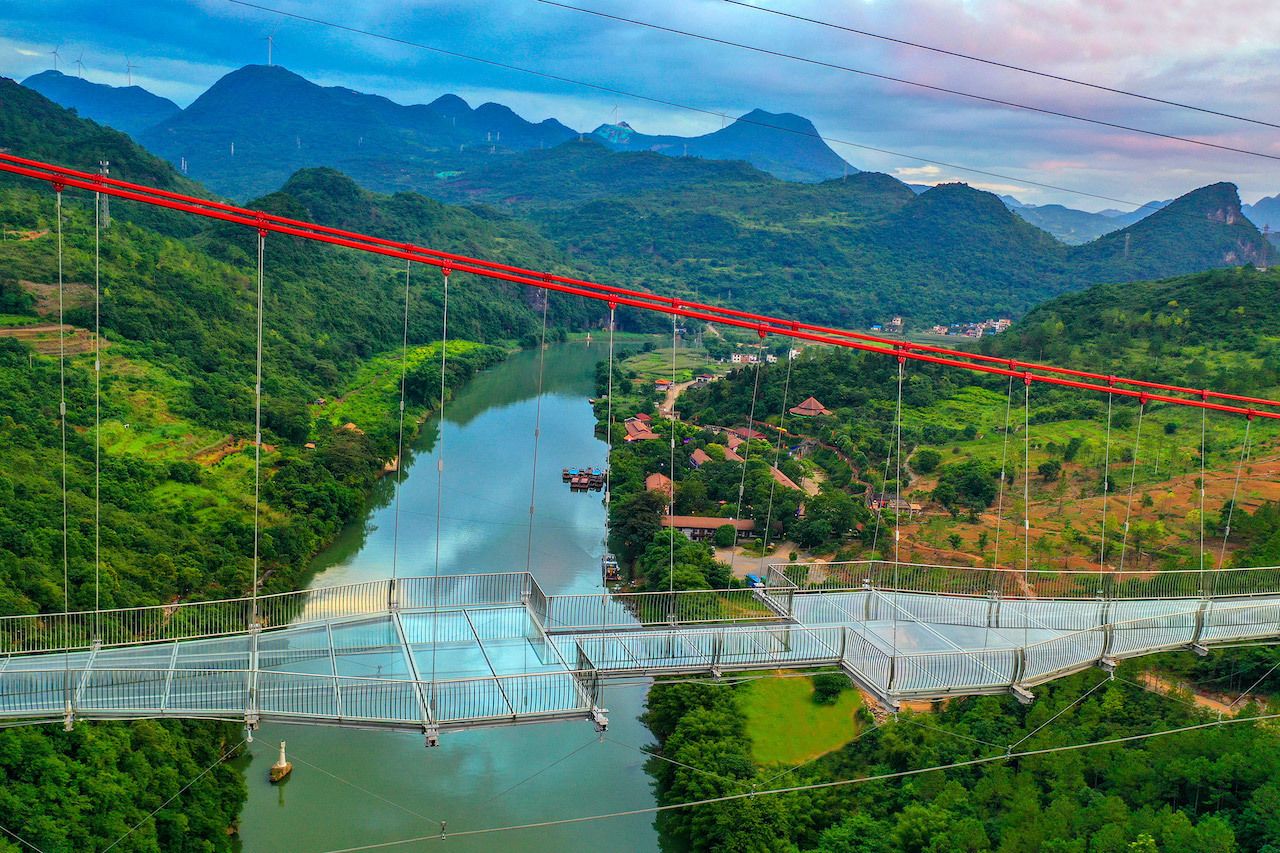
Photo: Lianzhou Qingtian Tourism Development Co., Ltd.
The suspension bridge connects two sides of a gorge 660 feet above the river and has a capacity of 500 people. Suspended from cables and supported by two red towers at either end, it’s constructed using three layers of tempered laminated glass, and has a transparent bottom that allows tourists to look directly down at the water. There are also large viewing areas where visitors can stop to take photos. The glass-bottomed feature offers a pretty cool perspective, but if you’re afraid of heights, this bridge might just be your worst nightmare.
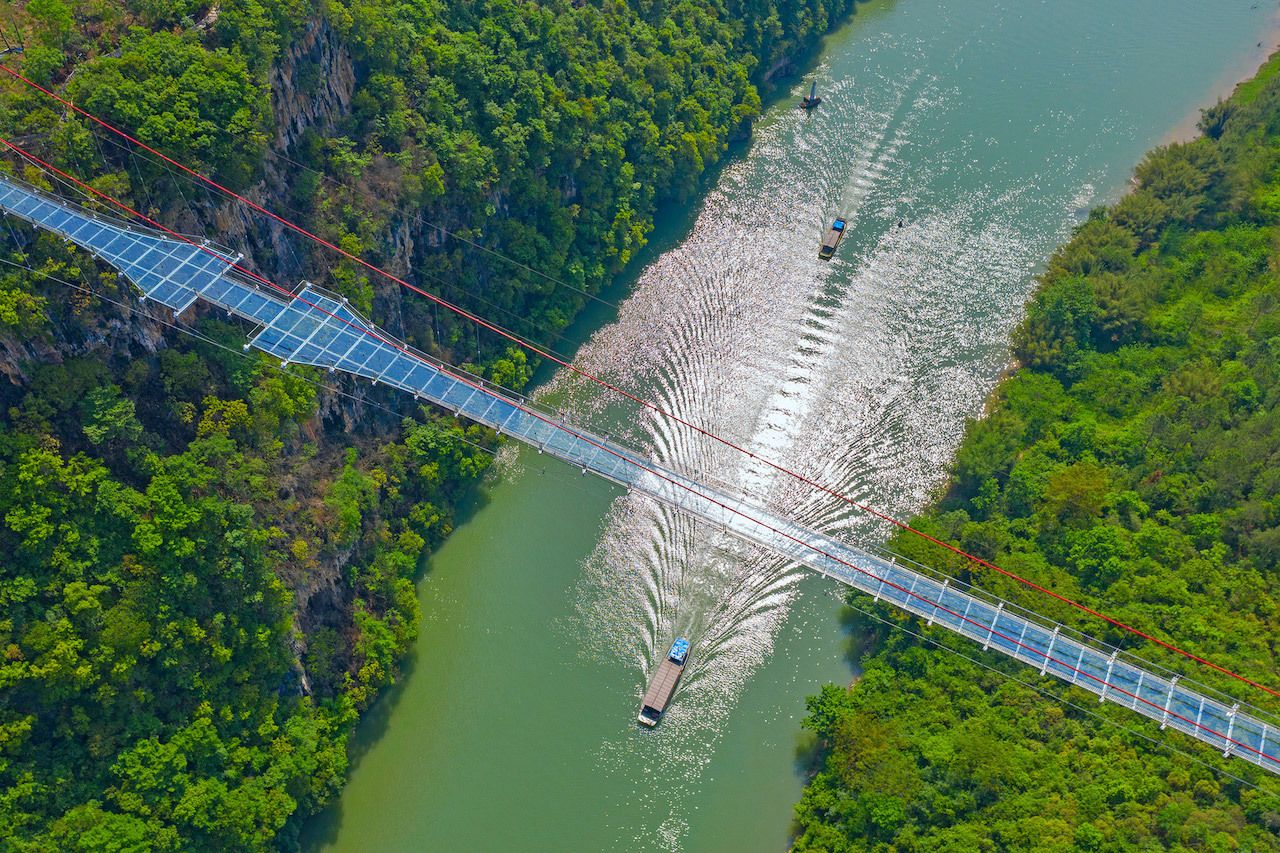
Photo: Lianzhou Qingtian Tourism Development Co., Ltd.
The bridge’s glass design is intended to merge the structure with its natural surroundings. According to the studio, “The glazing endows the bridge deck with crystal-like lustre, high transparency and refractive index…Through blending the structure into the natural surroundings and deploying innovative construction methods, the design team realized the seamless integration of nature and the artificial.” 
More like thisArt + ArchitectureThe scariest observation decks around the world
The post The world’s longest glass-bottomed bridge just opened in China appeared first on Matador Network.

Terror Town, Ohio, experience
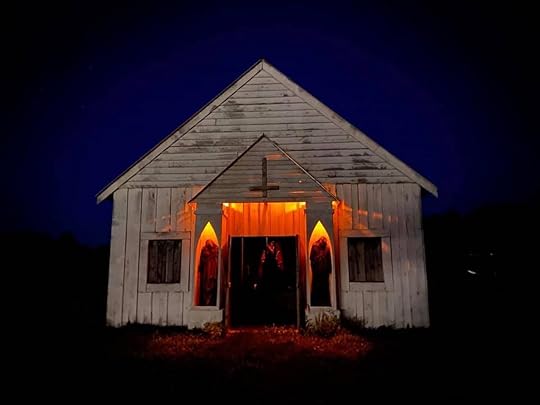
This fall, Williamsburg, OH, is taking Halloween to the next level. It will be hosting a blood-curling event called “Terror Town” set in a replica of a 19th-century Western town with period buildings and filled with terrifying costumed characters.
Visitors can participate in interactive games like axe-throwing and zombie brain smash, meet townspeople dressed in spooky costumes, and shop at one of the town’s 25 stores including candy shops and saloons. In one saloon visitors can watch a live band, and in another they can partake in “Scaryoke.” If your singing voice is more frightening than a haunted house, you can visit the outdoor theater playing classic horror movies.

Photo: All Hallows’ Eve LLC
If you’re really brave, you can also embark on the Ultimate Horror Haunted Trail, an immersive walk that takes you through some of the most horrifying aspects of Terror Town. According to the website, “You may start walking the trail with your friends, but by the end you are likely to be left all alone. Blood drenched, tortured in an asylum cell, locked up as a prisoner, buried alive, and endless other scenarios.”
Organizers are assuring prospective visitors that appropriate safety precautions will be taken to prevent COVID-19 transmission. Social distancing will be practiced at all venues, with capacity limits enforced in the shops and saloons. Hand sanitizing stations will also be available throughout the town.
The haunted historical experience runs from September 4 to November 14, every Friday through Saturday from 7:00 PM to 2:00 AM. Tickets start at $25. 
More like thisFood + DrinkSki the Powder Highway in British Columbia, Canada
The post This Ohio town is turning itself into a horror movie this fall appeared first on Matador Network.

Matador Network's Blog
- Matador Network's profile
- 6 followers



